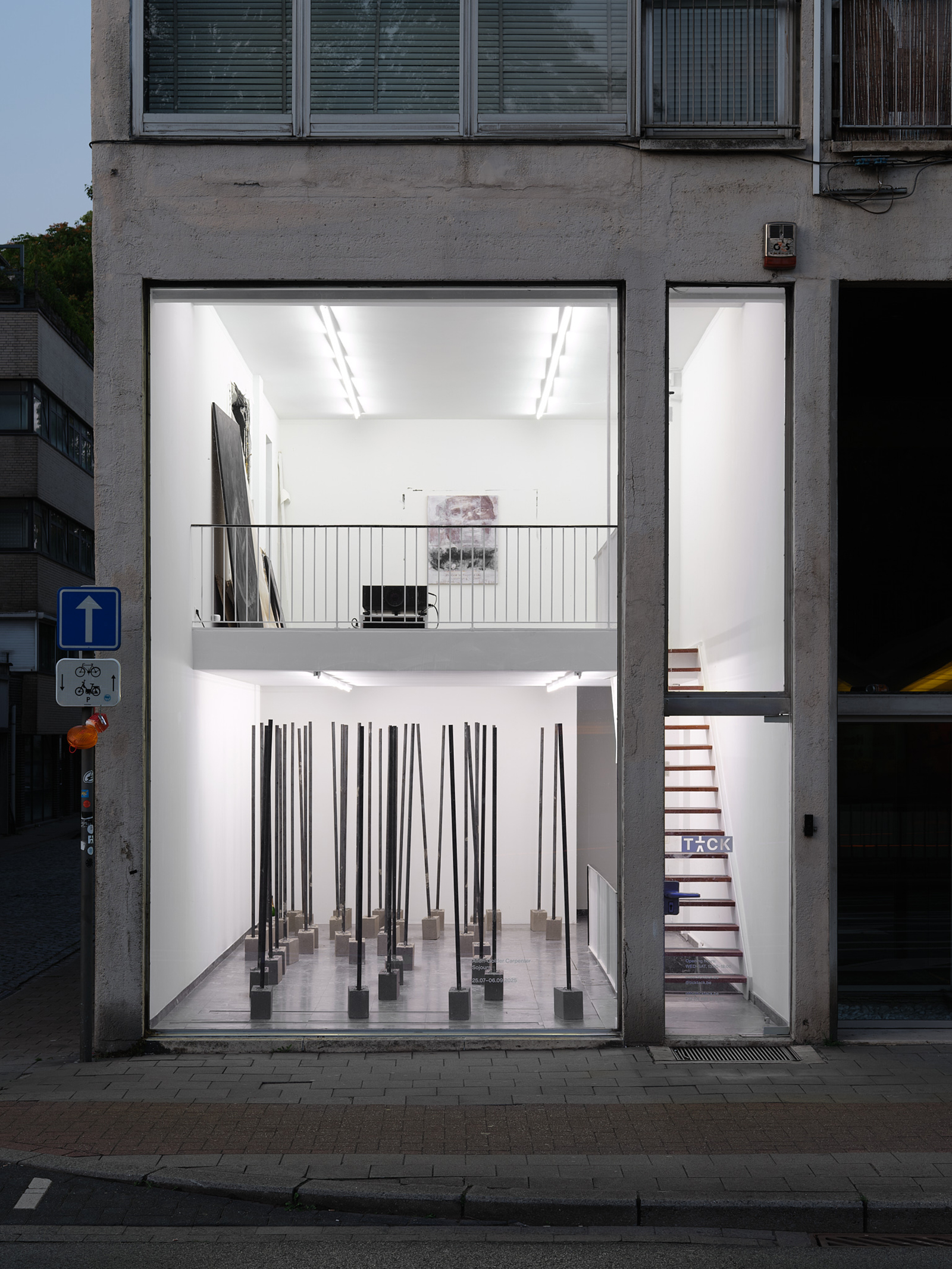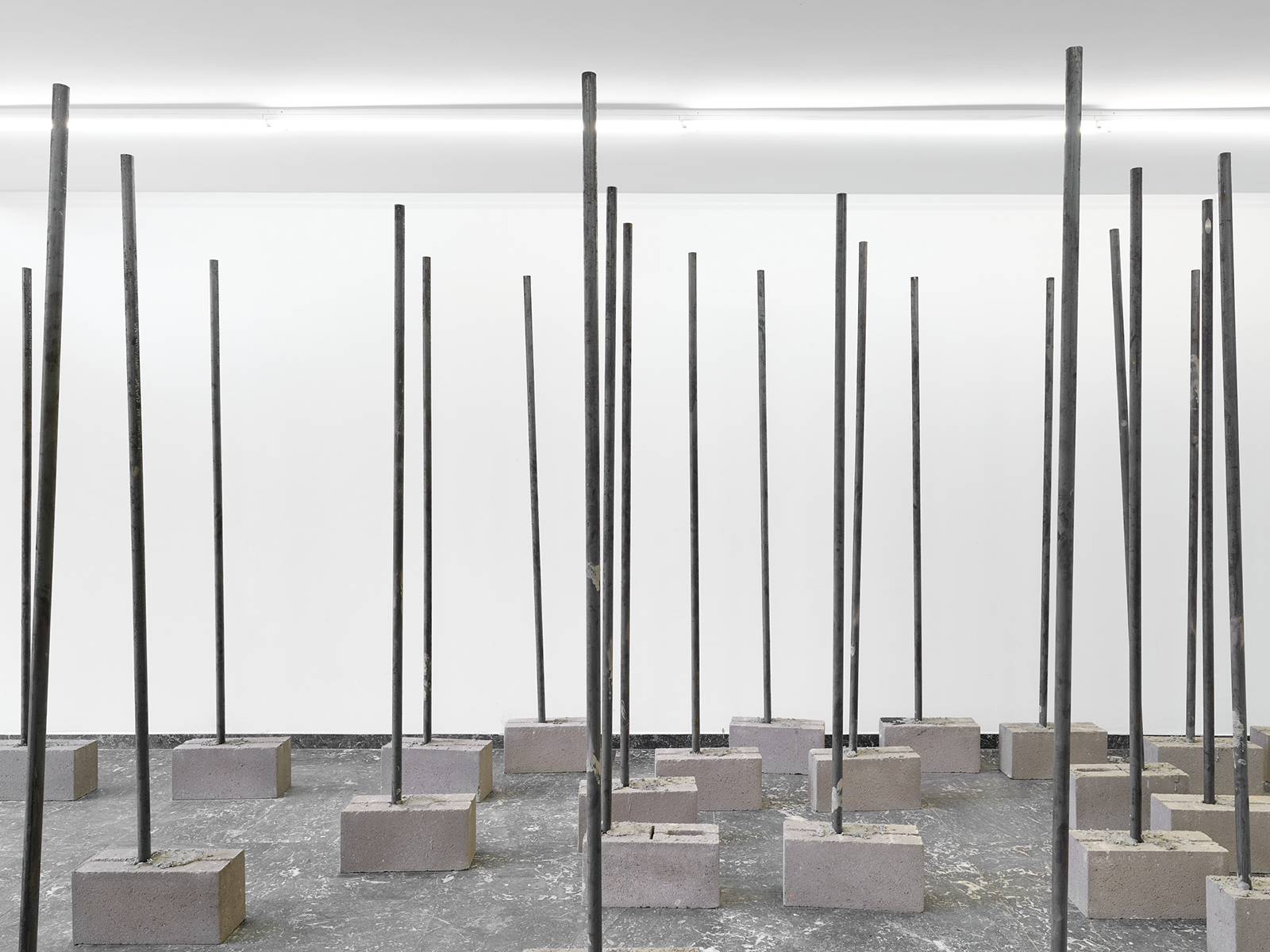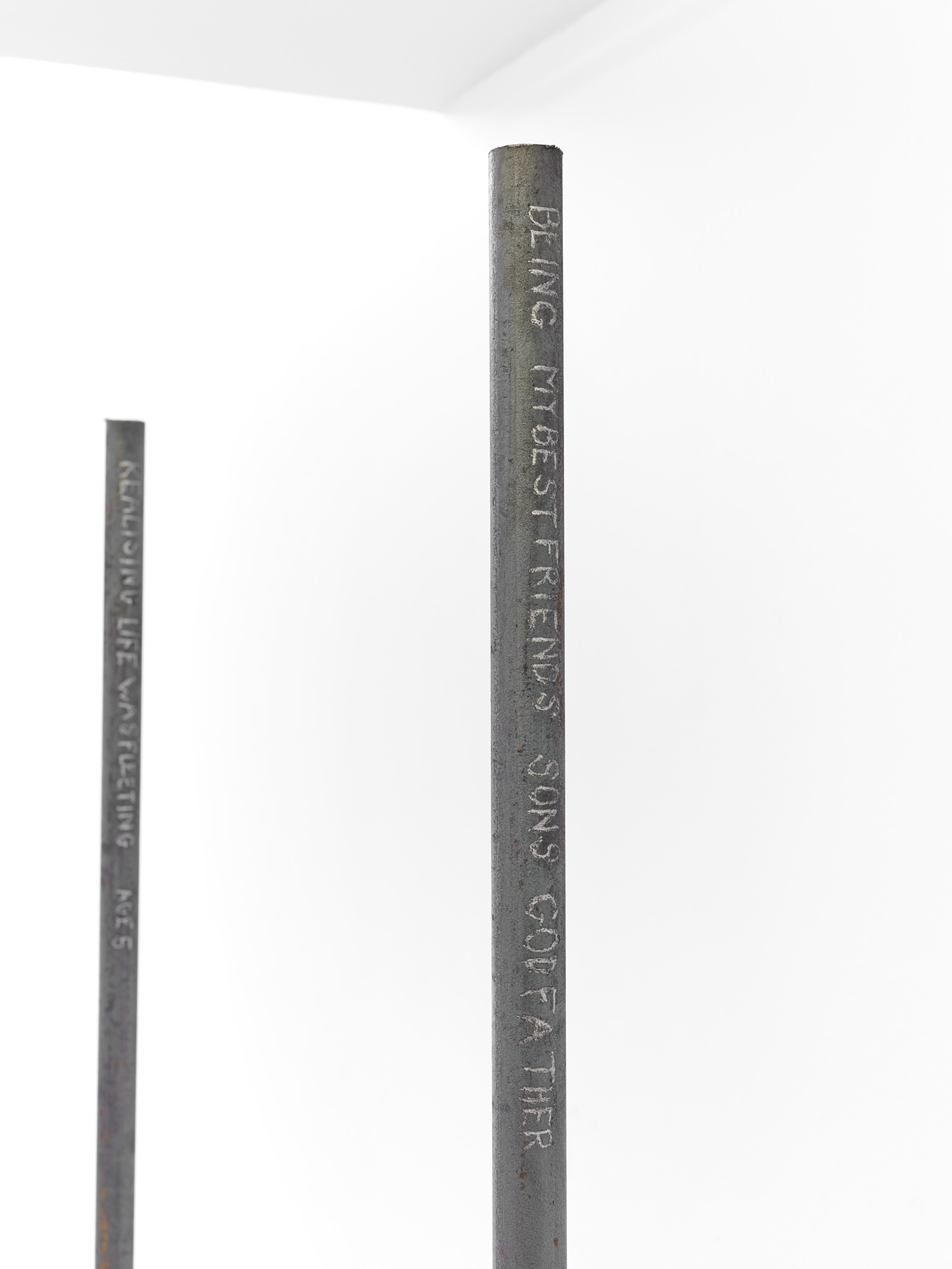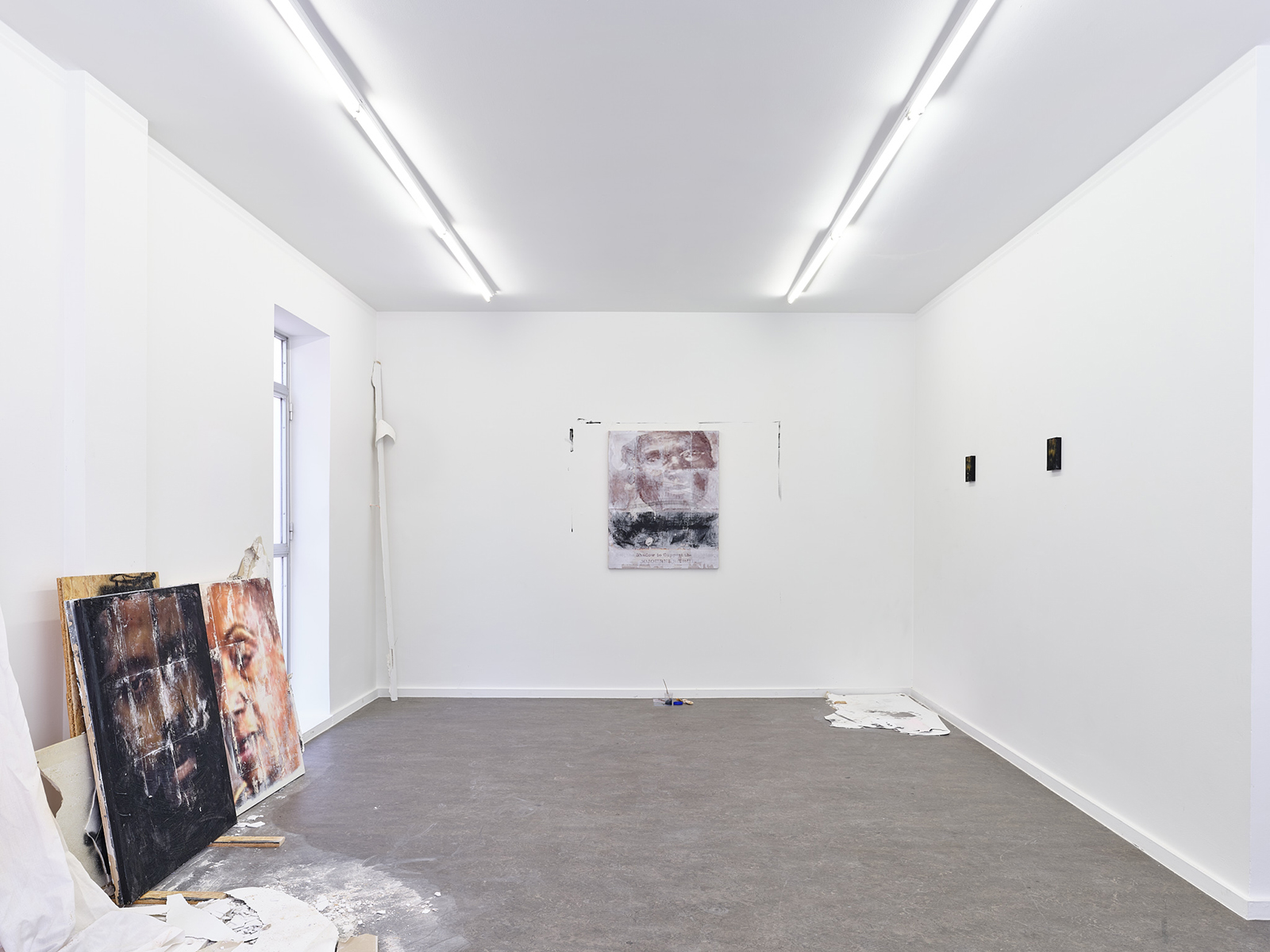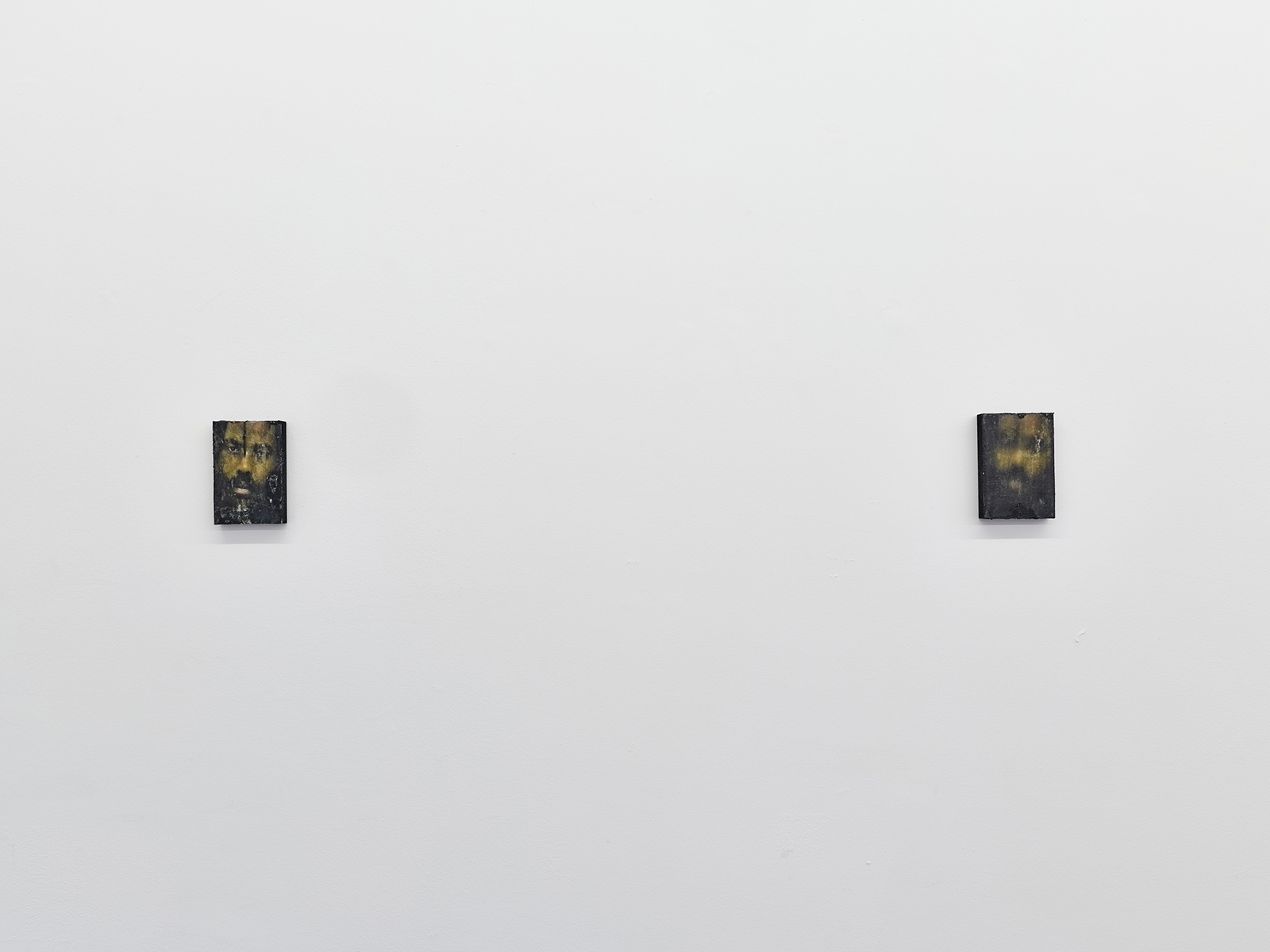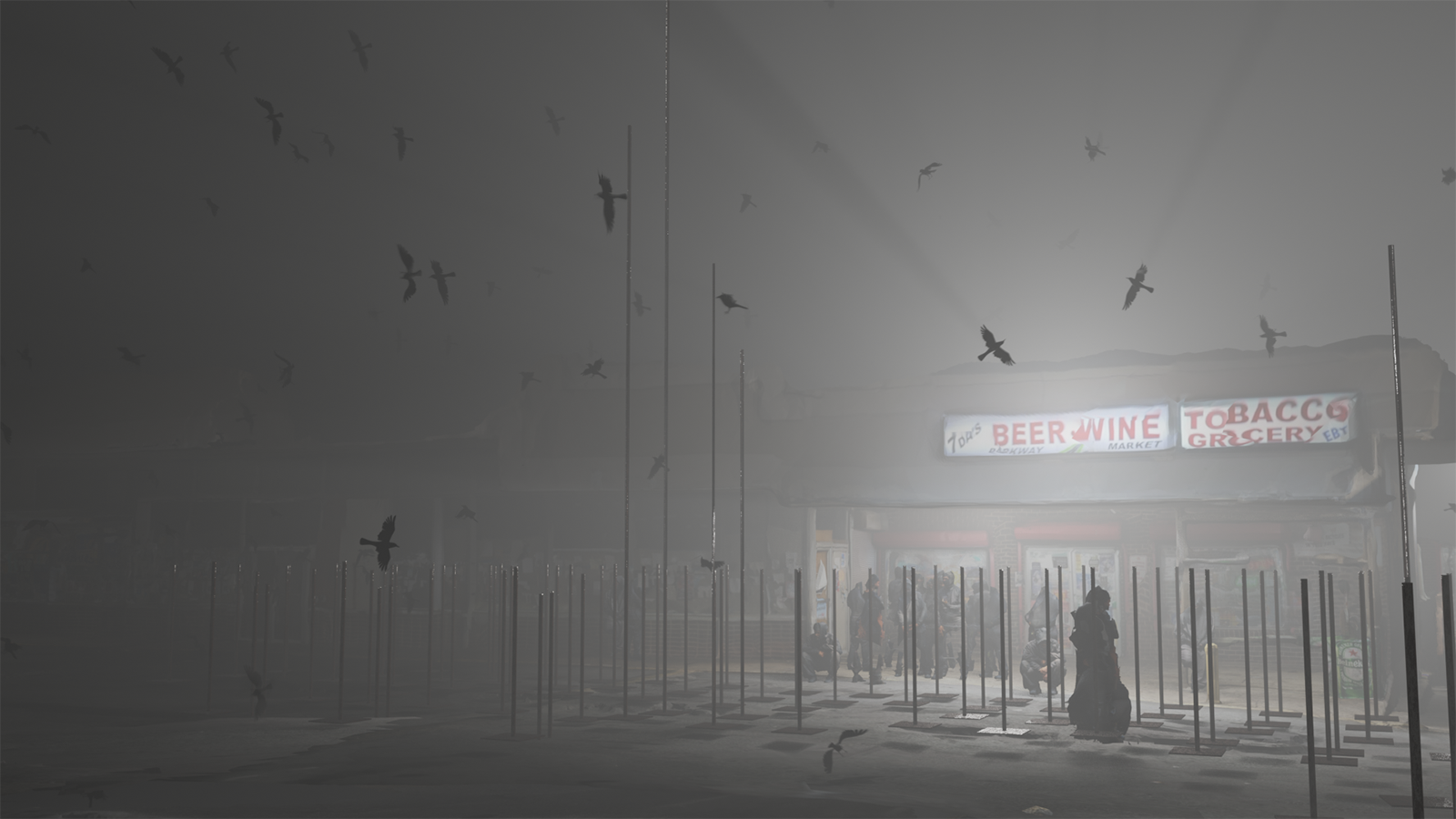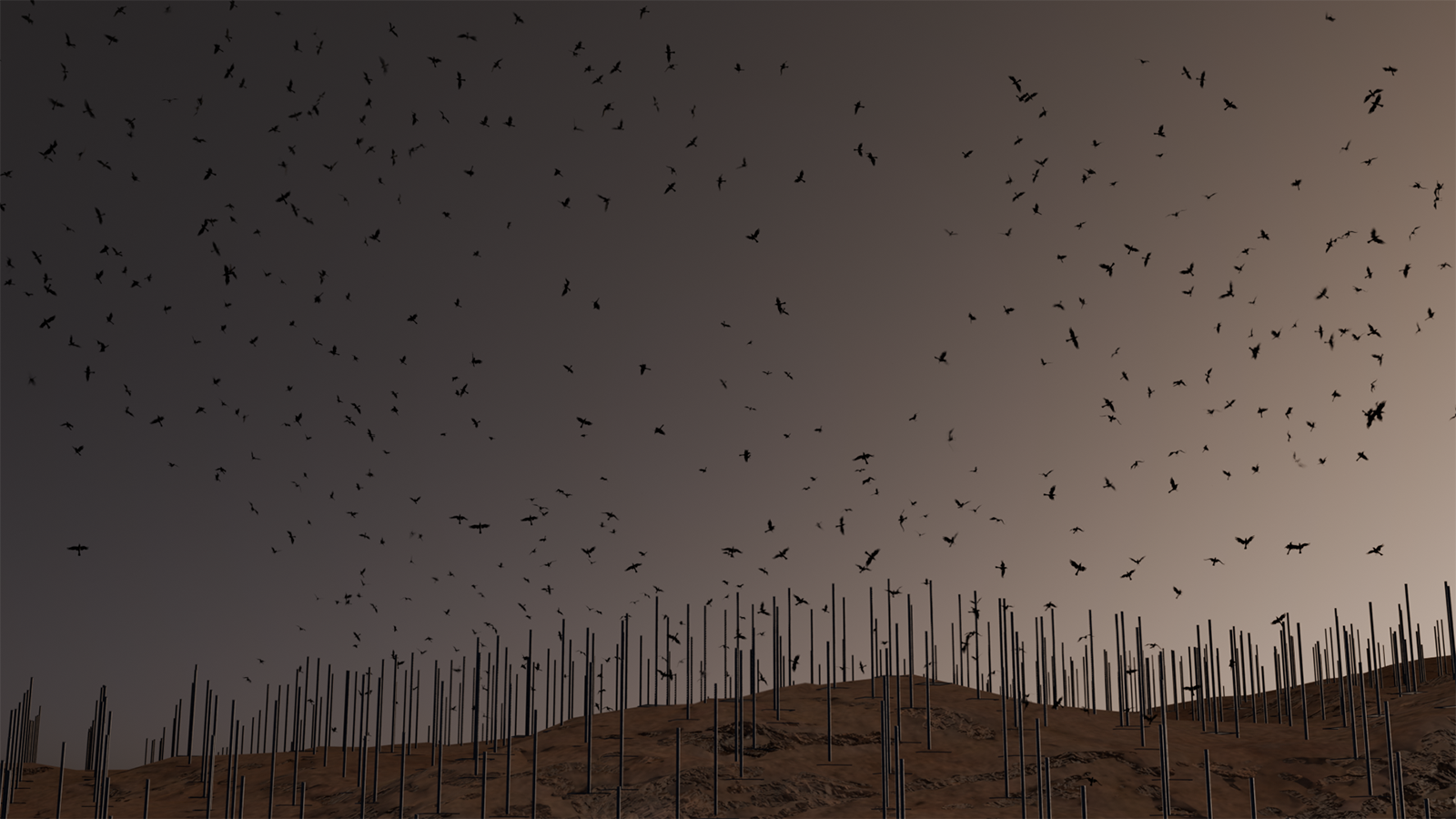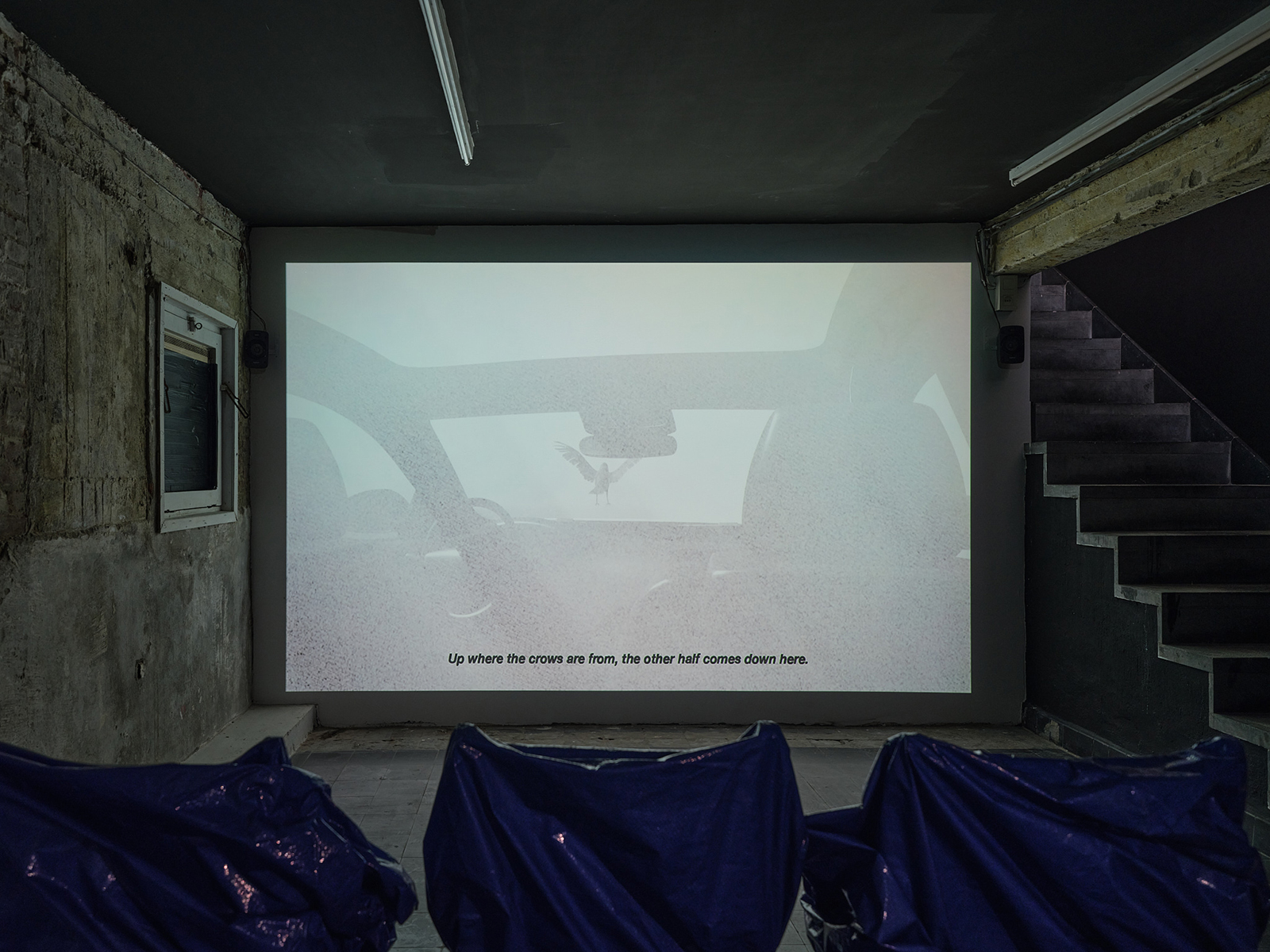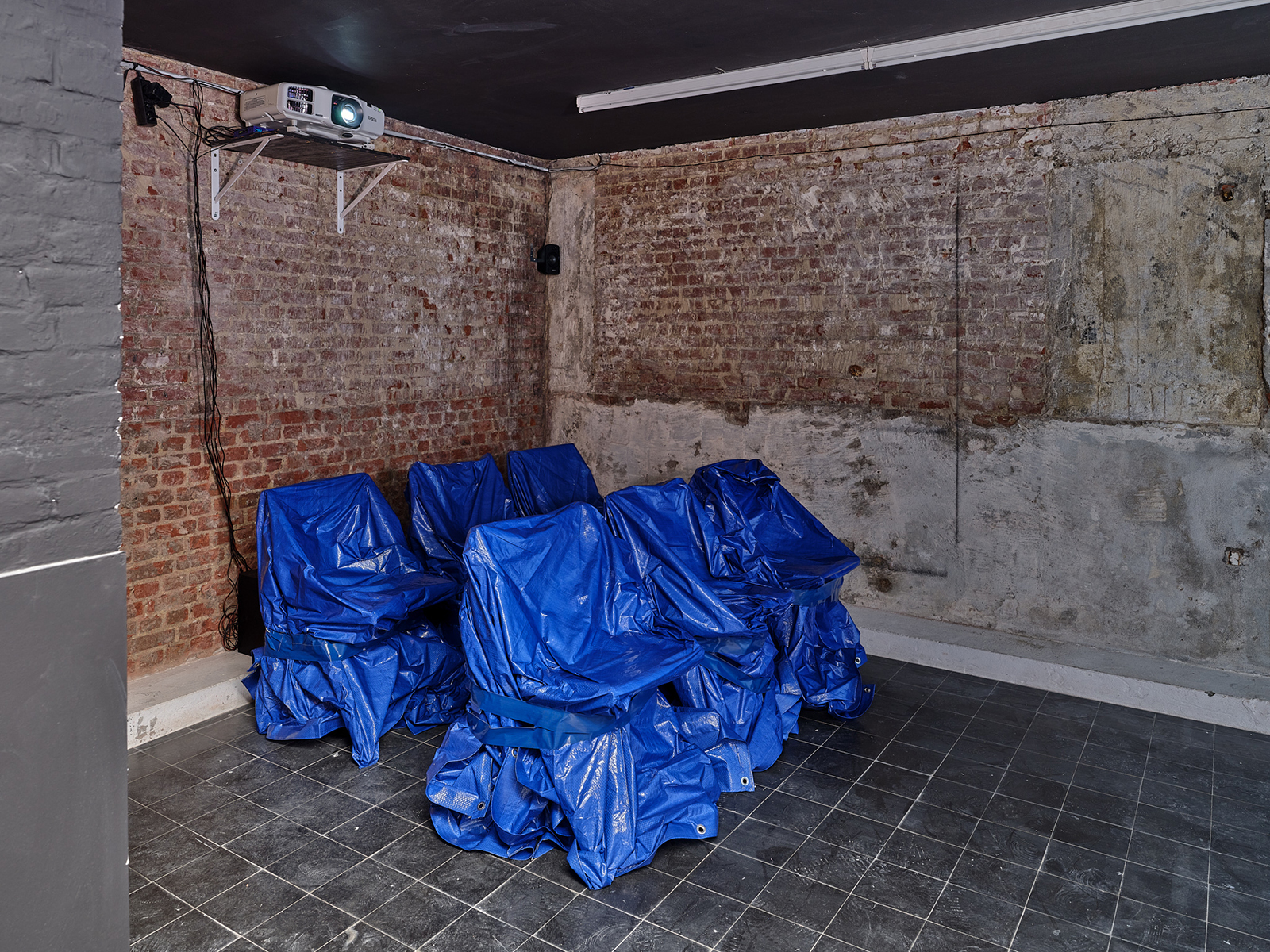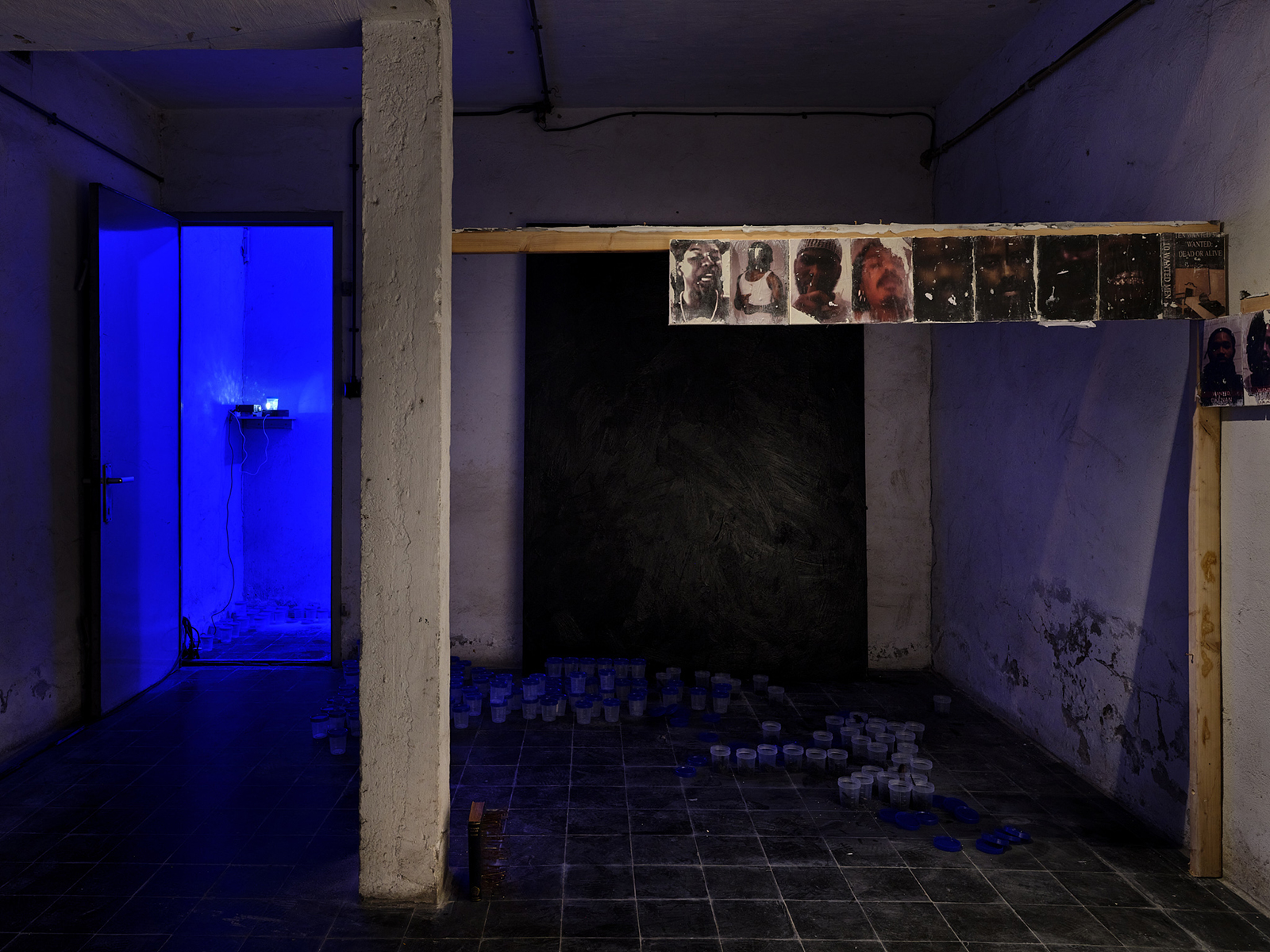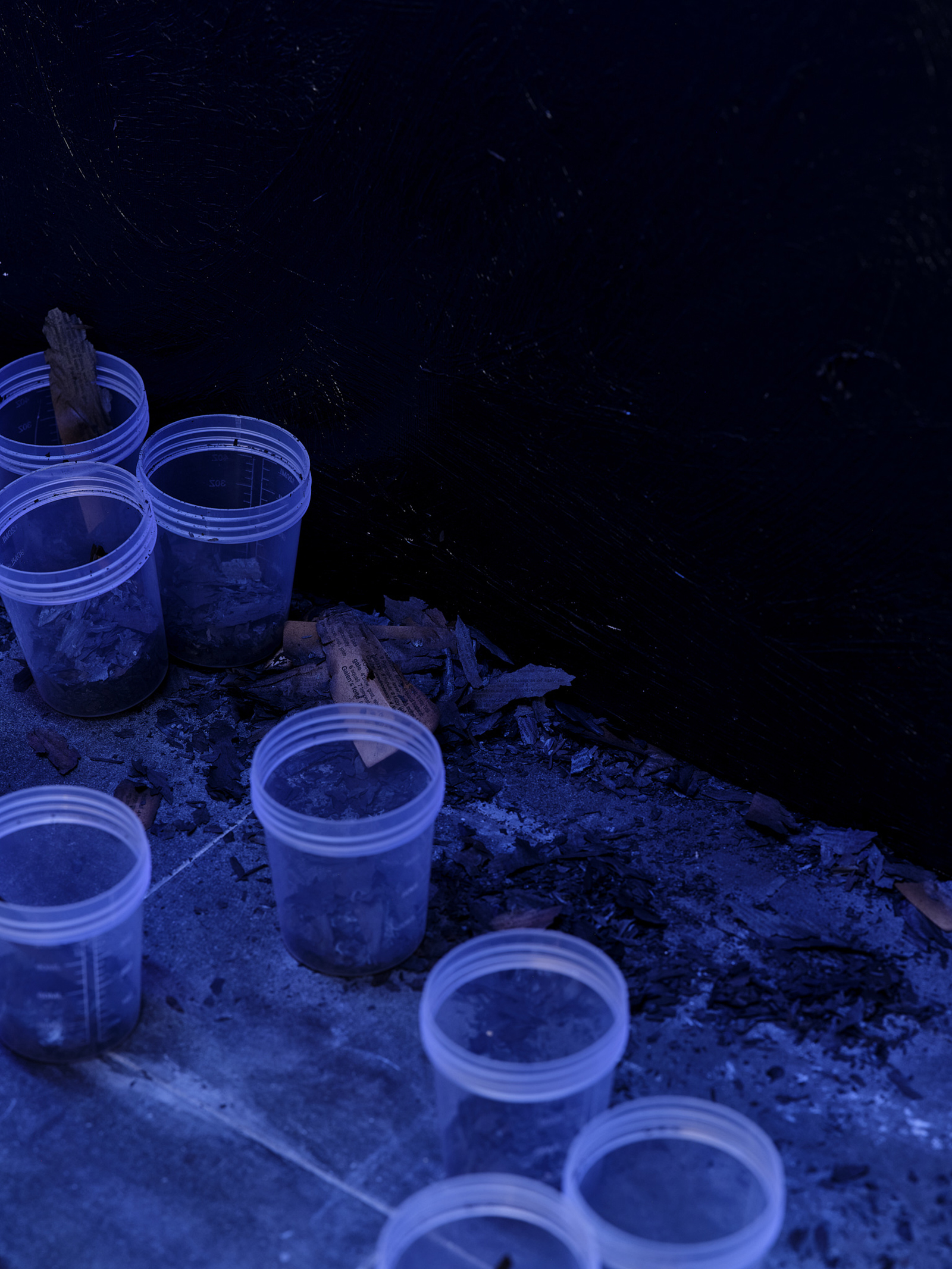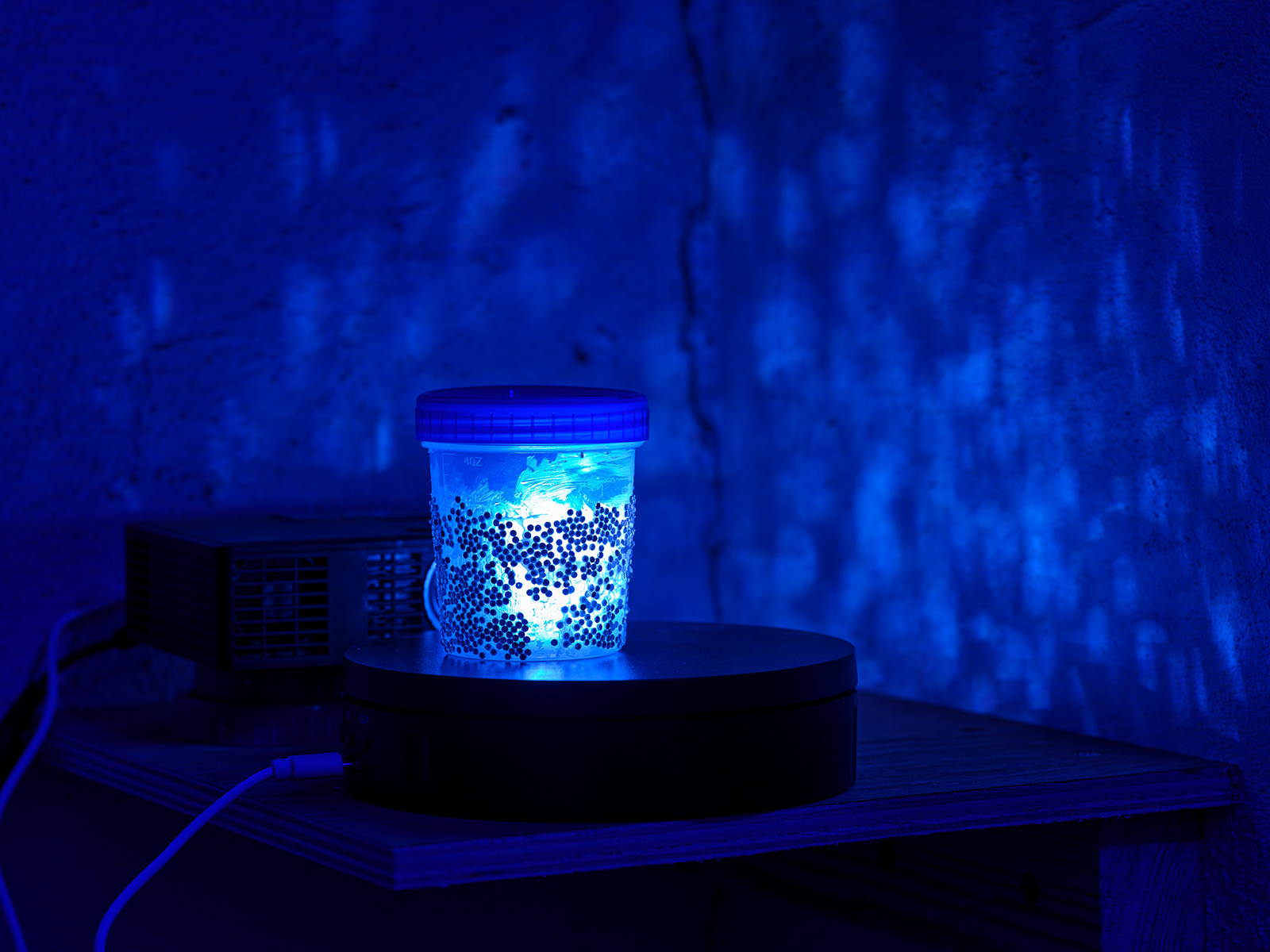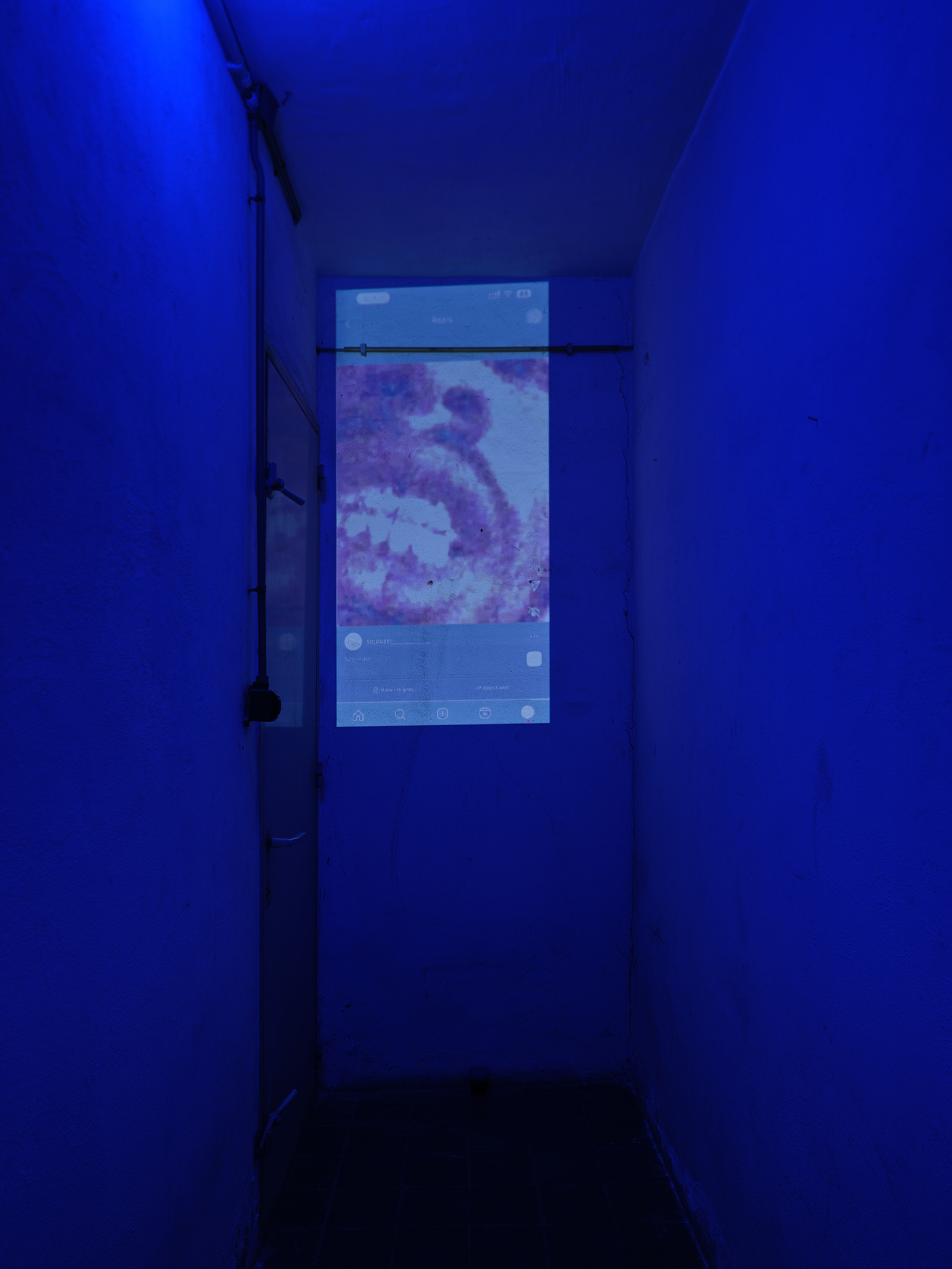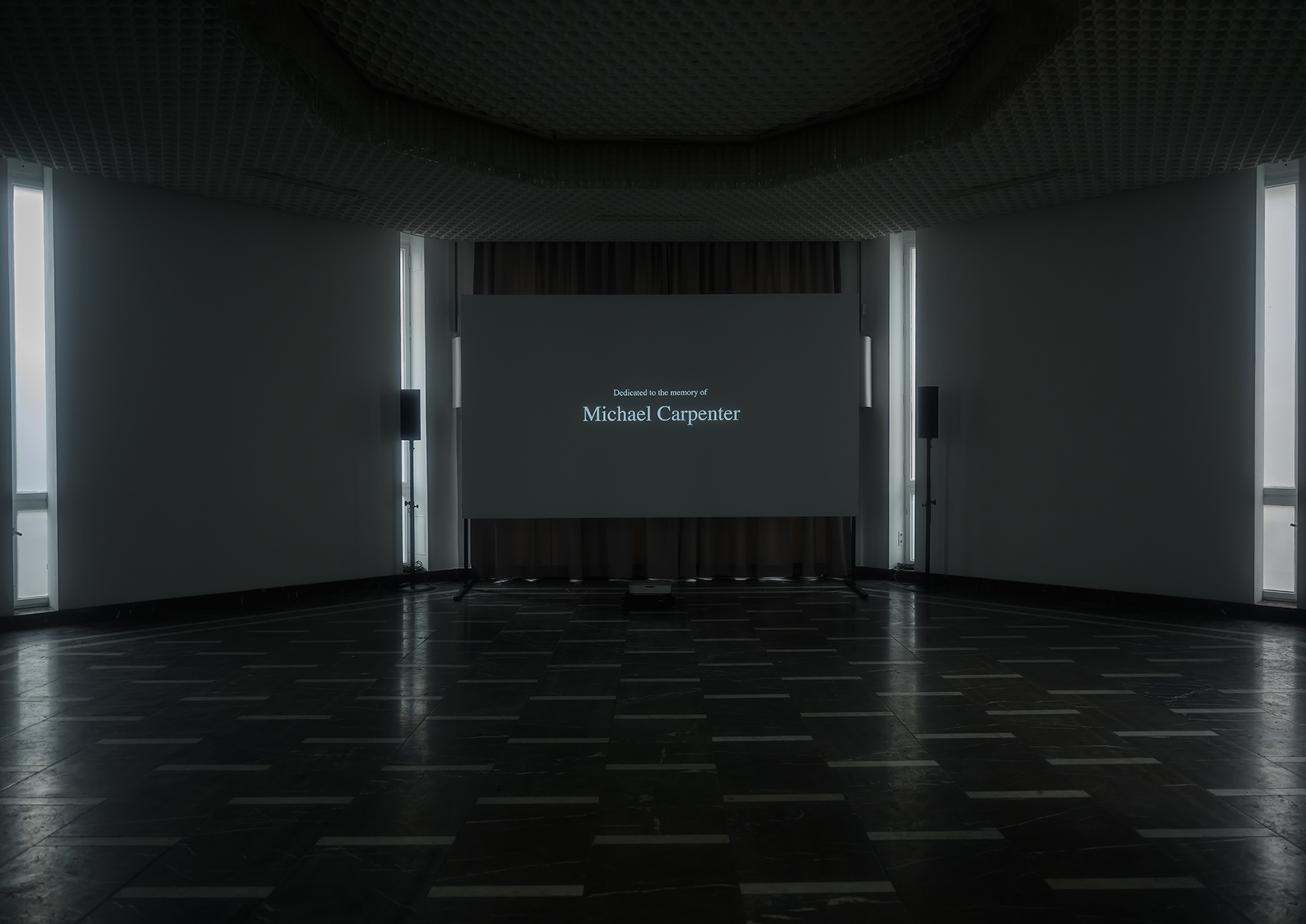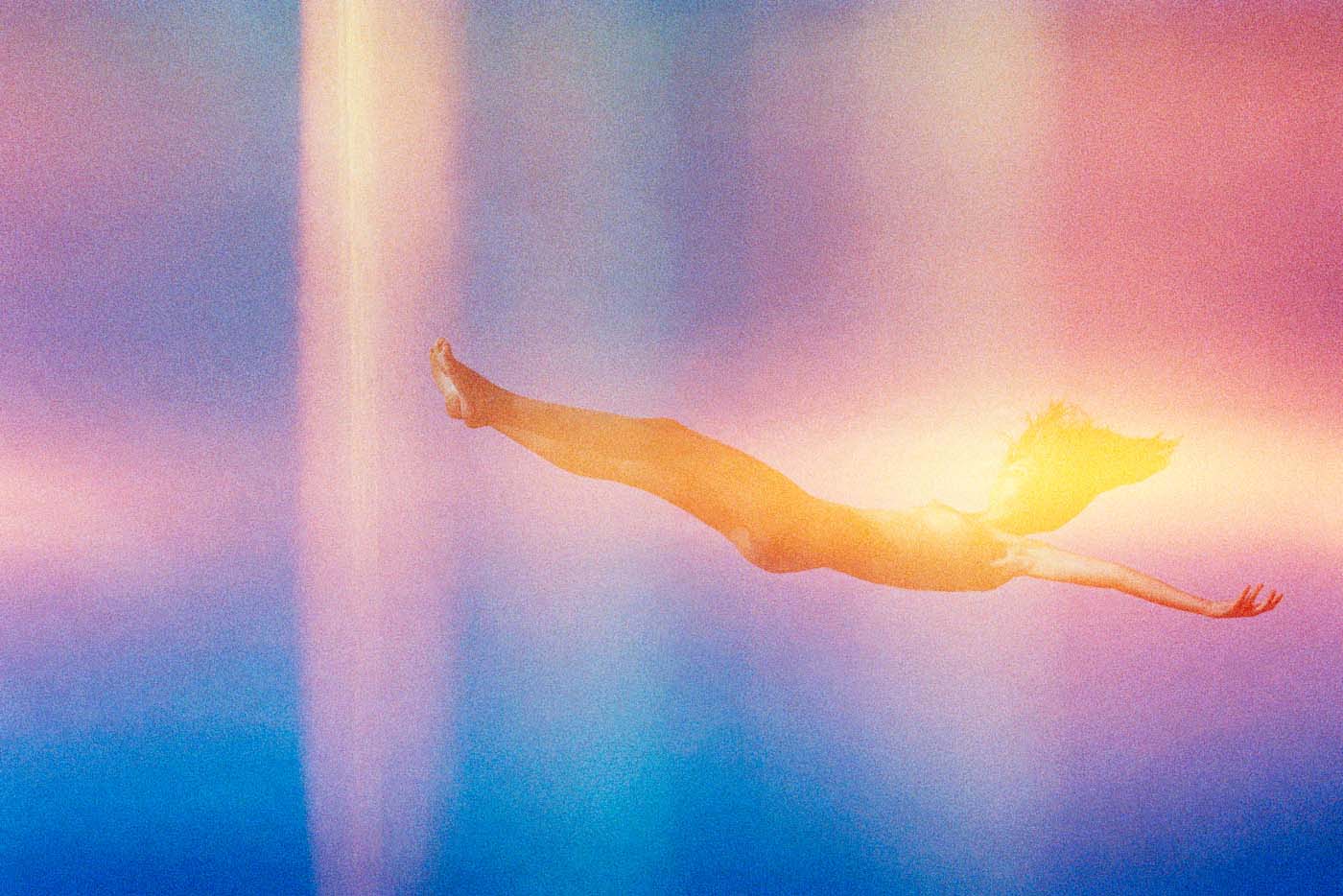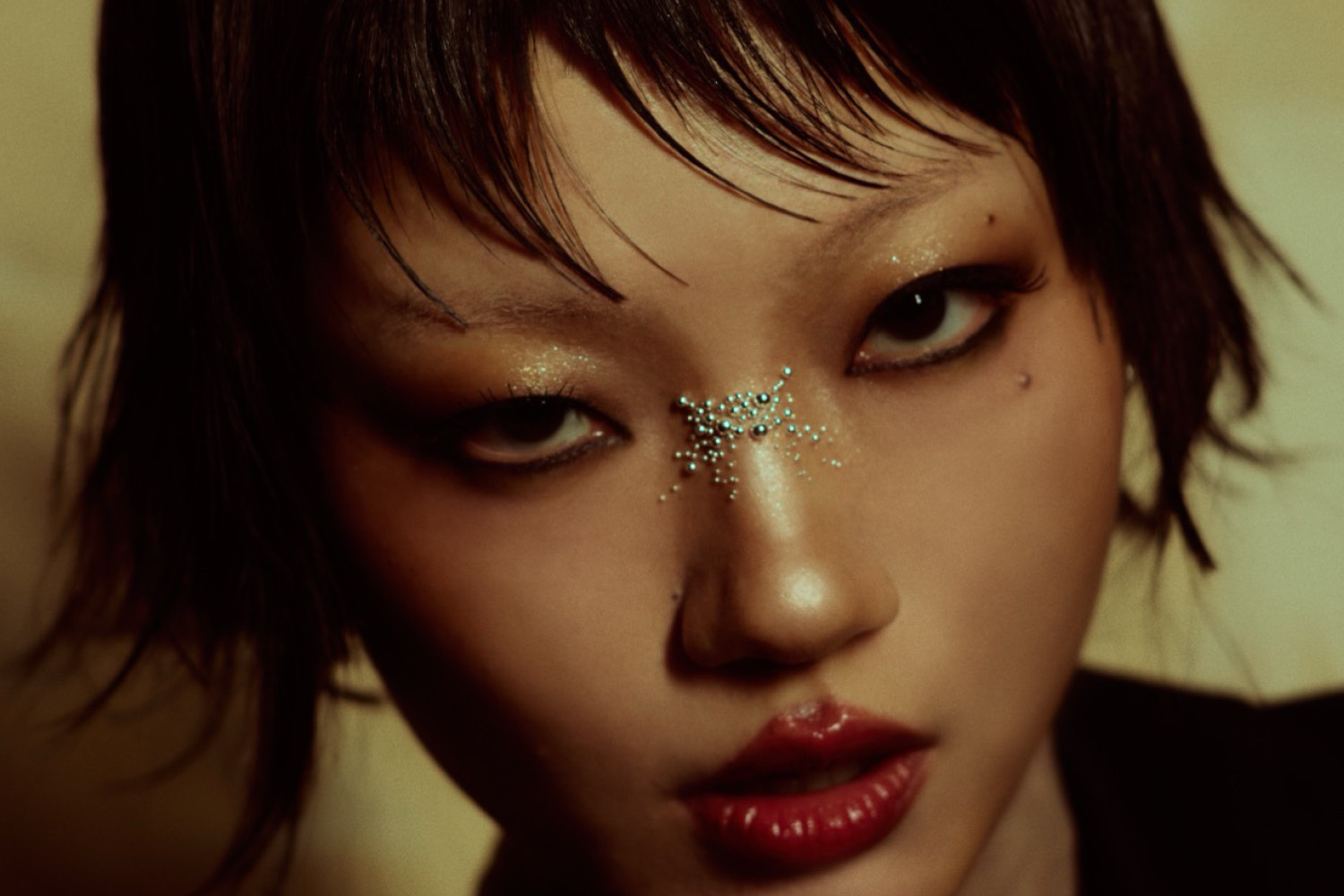A Sermon in the Mezzanine
The opening night begins with the artist’s voice traversing the space, animating the faces in the paintings across the light-filled mezzanine and reverberating through the metal and cement of the ground floor installation. “I wanted everything for you that I wanted for myself,” they cry out, the words sibilating through the microphone they hold. A couple of folded sheets containing fragments of poetry lay nearby the DJ deck, over which the artist leans while reciting verses like a rap poem, their baritonal tone echoing in the gaze of the attendees like an unfulfilled prophecy. People gather along the mezzanine walls, some leaning slightly forward as if drawn toward the figure at the centre of the invocation, while others remain below, looking up through the staircase void as though attending a sermon.
The artist, Allen-Golder Carpenter, stands beside the equipment, suspended between sound and verse. Using a printed poem as a prompt, they synchronise each line to the rhythm of a low, pulsing beat. The quote, an excerpt of the verse composition delivered live by Carpenter, crystallises the TICK TACK Antwerp latest exhibition Sojourn intention. “I wanted everything for you that I wanted for myself” becomes a declaration of shared burden, a love shaped by constraint. It speaks from a lineage of effort and exhaustion, but also of devotion, offering survival in what is left behind or given away. It signals that the exhibition will not follow a linear path or thematic inventory. Instead, it unfolds as a durational rite through which visitors, as witnesses, move across layers of remembrance, inheritance, and resistance.
Carpenter, born in 1999 in Washington, D.C., and identifying as a gender non-conforming artist, positions their practice as a structure for survival. Art becomes a necessity, a memory-work, a frequency to which to tune to achieve collective recognition. The exhibition title Sojourn not only refers to a temporary stay but also evokes Sojourner Truth, an activist to whom a painting is dedicated and whose name and legacy resonate beneath the surface of the show. As with Truth’s own passage from enslavement to liberation, and shaped by the gallery’s tripartite structure, the exhibition moves through thresholds, becoming a narrative formed by liminal spaces and erased narratives.
The Grave / Ground Floor
Just before entering TICK TACK Gallery, the viewer can already have a grasp of the exhibition, as one sees it from the street through the wide front window: an evenly distanced mass of metal rods fixed into blocks of grey cement occupying the main room. The concrete has not been smoothed; the rods are slightly off-centre. They seem to lean toward one another, as if unsure of their own function, the only irregularities in this deadly repetition of elements. Their presence is quiet, somehow heroic, as if they had traversed calamities to reach the polished ambient of the gallery. It doesn’t take too long to interpret them as some form of post-apocalyptic menhirs, signaling the presence of a cemetery unmoored from memory. As a matter of fact, the visual origin of this sculptural gesture lies in a scene from the anime Evangelion: 2.0 You Can (Not) Advance, in which the main character encounters his father amid an expansive common graveyard of identical burial indications. Carpenter reframes this cinematic memory as an invitation to distinguish the singularity over the mass, to give attention to the single stories even when they are blurred by the names that history wants to erase.
While walking around those rods, one can notice that they have been engraved in the back, in the section that is not immediately visible from the beholder, further inviting the investigation of each single piece. During a guided tour with the artist, we discovered that it’s that precise quote that gives the title to the single work. Those words were selected when Carpenter had asked followers on Instagram to submit fears, lyrics or quotes that were particularly significant to them. These were then etched on the back of each rod, facing away from the entrance, legible only if the viewer circles around with intent. Each one marks a point of connection that exists outside of the artist’s authorship, in the attempt of etching in time and space an exchange of brief lapses of life through social media, the most fleeting form of interaction of our times. Through this lingering air of latency one becomes aware of the slowness of looking, making the act of reading shift towards a form of resistance to time.
 https://www.nastymagazine.com/wp-content/uploads/2021/04/monika-grzymala-nasty-magazine-003.jpg
1000
1500
admin
https://www.nastymagazine.com/wp-content/uploads/2015/02/new-logo-basker-WHITE4.png
admin2021-04-07 11:47:062021-04-13 13:04:43Monika Grzymala / Linear dimensions
https://www.nastymagazine.com/wp-content/uploads/2021/04/monika-grzymala-nasty-magazine-003.jpg
1000
1500
admin
https://www.nastymagazine.com/wp-content/uploads/2015/02/new-logo-basker-WHITE4.png
admin2021-04-07 11:47:062021-04-13 13:04:43Monika Grzymala / Linear dimensions
